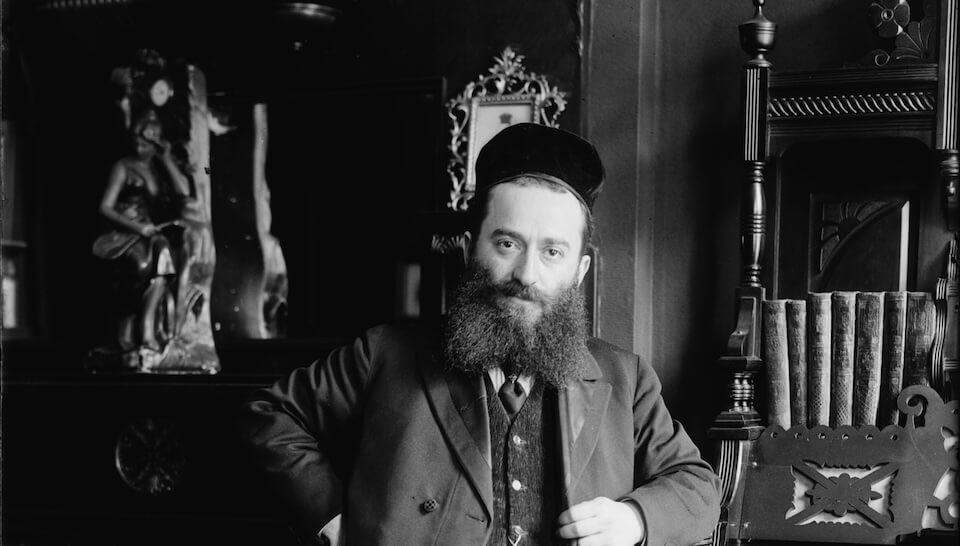At this yeshiva, academics, religion — oh, and the occasional Playboy mag
Although students were unruly, at times even sneaking the rabbi’s car keys from his coat pocket, many later became highly successful.

Graphic by Angelie Zaslavsky
As I read the recent sharply critical New York Times report on the Hasidic yeshiva school system, I was struck by how dramatically it differed from my own yeshiva experience.
I attended the all-boys yeshiva high school in Brooklyn known as the Brooklyn Talmudic Academy (BTA), which was part of the Yeshiva University system. The university’s motto was and still is Torah ve’Madah – Torah and science. My Class of 1968 had 99 young men, divided into three sections. No formal name was assigned to any of these sections, so some of us selected our own self-deprecating moniker, dubbing ourselves “Super Garbage.”
Our rabbis and teachers were all extremely dedicated. They didn’t spoon-feed us with an education but were completely nonjudgmental, and subtly — but very effectively — inspired us to learn and study both religious matters and secular subjects. They imbued us with a thirst for knowledge, which we deployed for the balance of our lives.
Unfortunately, we didn’t appreciate all our teachers’ hard work and many of us often gave them a hard time. Some of us were particularly rambunctious with some of our rabbis, like the now retired Rabbi Max Schreier, whom we drove to tears several times (for which I remain extremely embarrassed). Rabbi Schreier was a brilliant man and a natural leader. He subsequently served as the president of the Rabbinical Council of America and the governing body of Orthodox clergy, and regularly met with Jewish leaders the world over.
Our school had no gym nor any physical training program. Our only outlets were in the classrooms, which often seemed about to break into a riot. A number of years later, when the TV series “Welcome Back, Kotter” premiered, I could have sworn the storyline was premised on my high school experience and that the Vinnie Barbarino role (played by John Travolta) was inspired by me. When Kotter named his young charges “Sweathogs,” it was as if the producers knew about our Super Garbage nickname, but changed it to protect our privacy.
What went on in a typical classroom might have been shocking to a casual observer. During Talmud class, while we were supposedly immersed in, say, the nuances and intricacies of Jewish betrothal and divorce, a number of students were poring through the latest issue of Playboy, neatly tucked into the binding of the oversize Aramaic volume or engaging in a clandestine poker game.
Occasionally, some students would sneak out of an open second-floor window, shimmy down to the adjacent ersatz basketball court and have pickup games, only to return, doused in perspiration. When one of our rabbis parked his car under the backboard, one of my classmates would sneak his hand into the pocket of his overcoat hanging in the class coat closet and take his car keys.
While we were not permitted to leave the school building, some students nonetheless would regularly go pick up a cup of coffee from a nearby deli to enjoy in the classroom. On occasion, a student would open a large adjacent window and light up a cigarette, wafting the smoke outwards. Some joined a nearby bowling league and would leave the classroom to go knock some pins down during the four-hour morning Talmud class. Others would go check out clothing sales in nearby stores, returning with bundles of new clothing.
The boisterous mien of some of my classmates was not a reflection of a lack of intellect. The school’s students regularly achieved the highest scores on standardized state and national tests, and many of its graduates achieved great success in academia, the sciences, the professions, in technology and the rabbinate.
One of those was the future renowned lawyer Alan Dershowitz, who was a few classes ahead of me. His hijinks were legendary. Our principal, the late Rabbi Abraham Zuroff, was said to have once exclaimed publicly: “Dershowitz, you will never amount to anything!”
Other fellow alums include the American-Israeli author and columnist, Yossi Klein Halevi, and constitutional scholar Nathan Lewin.
After my own graduation from the school, I went to Brooklyn College and then law school at night, while working full time as a clerk at a Wall Street firm. I was one of three in my New York Law School class of 250 to be hired by a prominent international firm.
After 10 years there, I ran into Rabbi Schreier. Our encounter said a lot about the impressions I had left on him. But in order to set the stage I need to give some background.
One of the partners at my law firm was Maurice Boukstein, who together with Albert Parker and Judge Simon Rifkind, had led a group of volunteer lawyers in 1947 and 1948 to lobby the United Nations for the partition plan for Palestine. They also advised the executive of the Jewish Agency for Israel, David Ben Gurion, and the other key leaders of the prospective Jewish state regarding the establishment of governmental infrastructure.
In the process, Boukstein added to his client list the Jewish Agency, Israel’s national bank, many other banks and almost every major Israeli based nonprofit.
When Boukstein died, I inherited many of these clients. I had also developed my own Israeli clients, including the office of the prime minister and the defense, foreign and treasury ministries. I advised El Al Airlines, several kibbutz-based industries, Israeli financial institutions, Israel Bonds and Bar Ilan University. I worked across the desk from each of Israel’s prime ministers from Yitzhak Shamir through Benjamin Netanyahu.
In the summer of 1988, I attended a breakfast meeting at the Park Regency Hotel in New York, where Israel maintained several suites for visiting officials. In attendance were Yitzhak Rabin, Shimon Peres and Rabbi Emanuel Rackman, the chancellor of Bar Ilan and my own mentor.
Rabbi Rackman, Peres, Rabin and I had another meeting later that morning. Because it was three blocks away and the weather was inviting, we decided to walk over, accompanied by a security detail. On the way, I was surprised to see Rabbi Schreier.
My former teacher stopped short in front of us and gaped wide-eyed. Pointing at me, he asked the illustrious group: “What are people like you doing with a guy like this?”
Years later, I phoned Rabbi Schreier and asked that we meet. As we sat in his Brooklyn study, I told him that I regretted two things about my high school experience: First, that I had been such an unruly student and, second, that I had failed to reach out to him and my other rabbis to thank them for the outstanding education they provided. His reply was not what I expected.
“I have to say I was stunned to see you in such august company,” he said, referring to our encounter in 1988. “So naturally, afterwards, I started asking around about the work you were doing.”
He paused briefly, cleared his throat and said: “I’m very proud of you.”
Correction: This article originally referred incorrectly to the author’s former teacher as “the late Rabbi Max Schreier.” Rabbi Schreier is not dead.





















